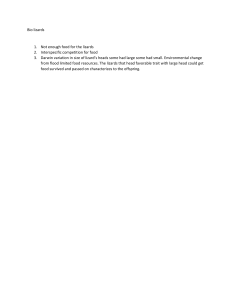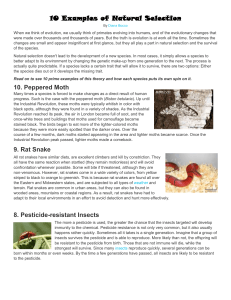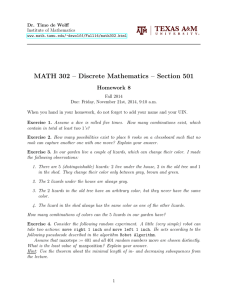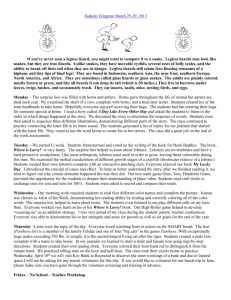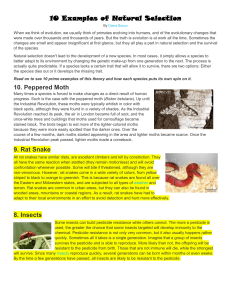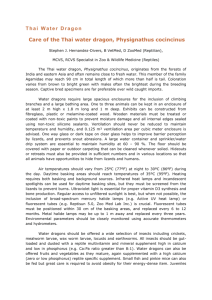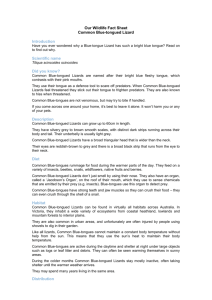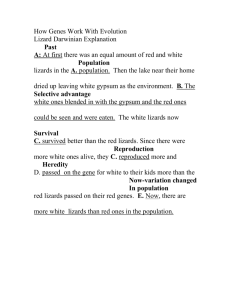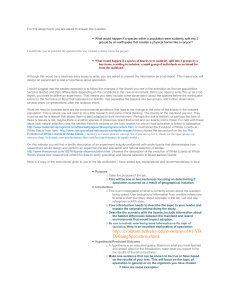File
advertisement
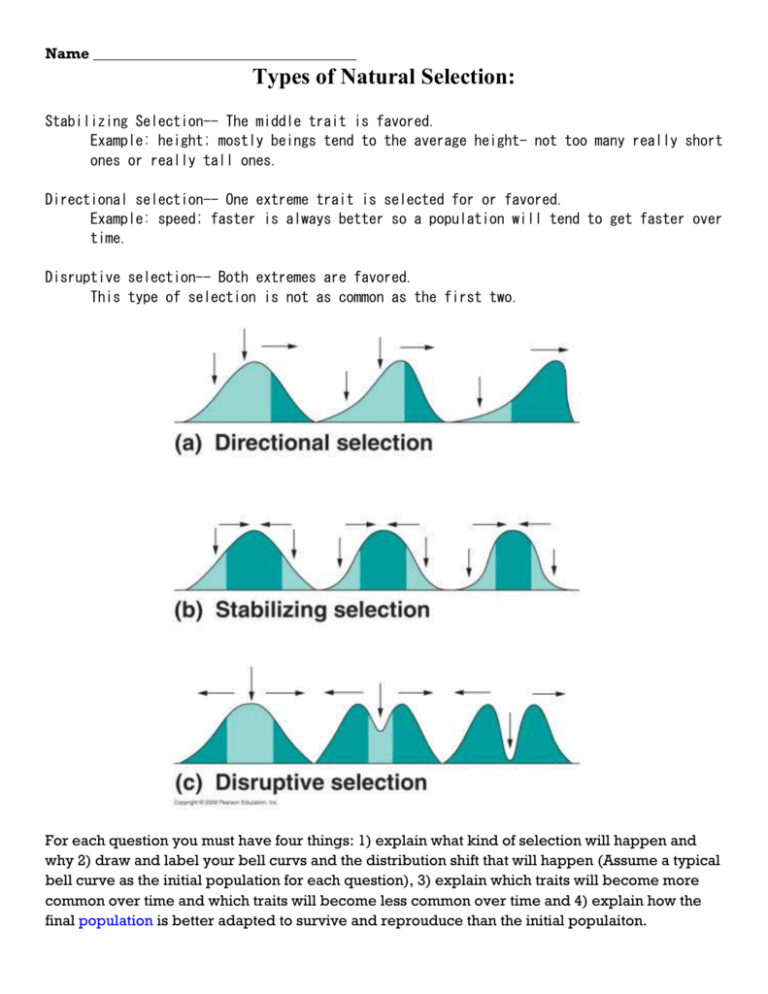
Name ___________________________________ Types of Natural Selection: Stabilizing Selection-- The middle trait is favored. Example: height; mostly beings tend to the average height- not too many really short ones or really tall ones. Directional selection-- One extreme trait is selected for or favored. Example: speed; faster is always better so a population will tend to get faster over time. Disruptive selection-- Both extremes are favored. This type of selection is not as common as the first two. For each question you must have four things: 1) explain what kind of selection will happen and why 2) draw and label your bell curvs and the distribution shift that will happen (Assume a typical bell curve as the initial population for each question), 3) explain which traits will become more common over time and which traits will become less common over time and 4) explain how the final population is better adapted to survive and reprouduce than the initial populaiton. 1) Long necks make it easier for giraffes to reach leaves high on trees, while also making them better fighters in “neck wrestiling” contests. 2) Small Aristelliger lizards have difficulty defending territories, but large lizards are very likely to be preyed upon by owls. 3) Suppose there is a population of rabbits. There are rabbits with black and white-colored furs. Also there is an intermediate gray- color fur. What type of selection would occur if this population migrated to an area that had very dark rocks as well as white colored stones? 4) In humans, birthweight can be represented by a typical bell curve. Babies of low weight lose heat more quickly and get ill from infectious disease more easily, whereas babies of large body weight are more difficult to deliver through the pelvis. Which type of selection would most likely occur? 5) All rat snakes have similar diets, are excellent climbers and kill by constriction. They all have the same reaction when startled (they remain motionless) and will avoid confrontation whenever possible. Some will bite if threatened, although they are non-venomous. However, rat snakes come in a wide variety of colors. In a particular grassy environment, there are two extremes a light green color and a dark green color. The intermediate trait is neon green color. The light green rat snakes can camouflage the best and as a result have a greater access to the limited resources in that area. 6) Mr. Brito frequently uses a certain kind of pesticide in order to get rid of a certain insect population from his garage. In his garage, there are insects that lack immunity to the pesticide as well as insects that are completely immune to the pesticide (extremes). Also, there are certain insects that have some immunity to the pesticide (intermediate trait) that is 50% die once they have made contact with the pesticide, while the other half survive. 7) A number of studies have been done on lizards to determine natural selection. One experiment temporarily eliminated the lizards' natural predators from a particular area, and then scientists observed what impact that had on the lizards. The surprising find was that it's not so much the predators that influence the death or survival of certain lizards. Instead, the smaller lizards were more likely to die off anyway despite the lack of natural predators, because the larger, stronger lizards in the area still had better access to food, which are limited resources. The lizards with the longest legs were able to climb better, escape the ground when floods or storms came, and reach food (limited resource) that wasn't available down below. Challenge Question For Question #6, explain how this insect population initially obtained the ability to be completely immune to this pesticide.
